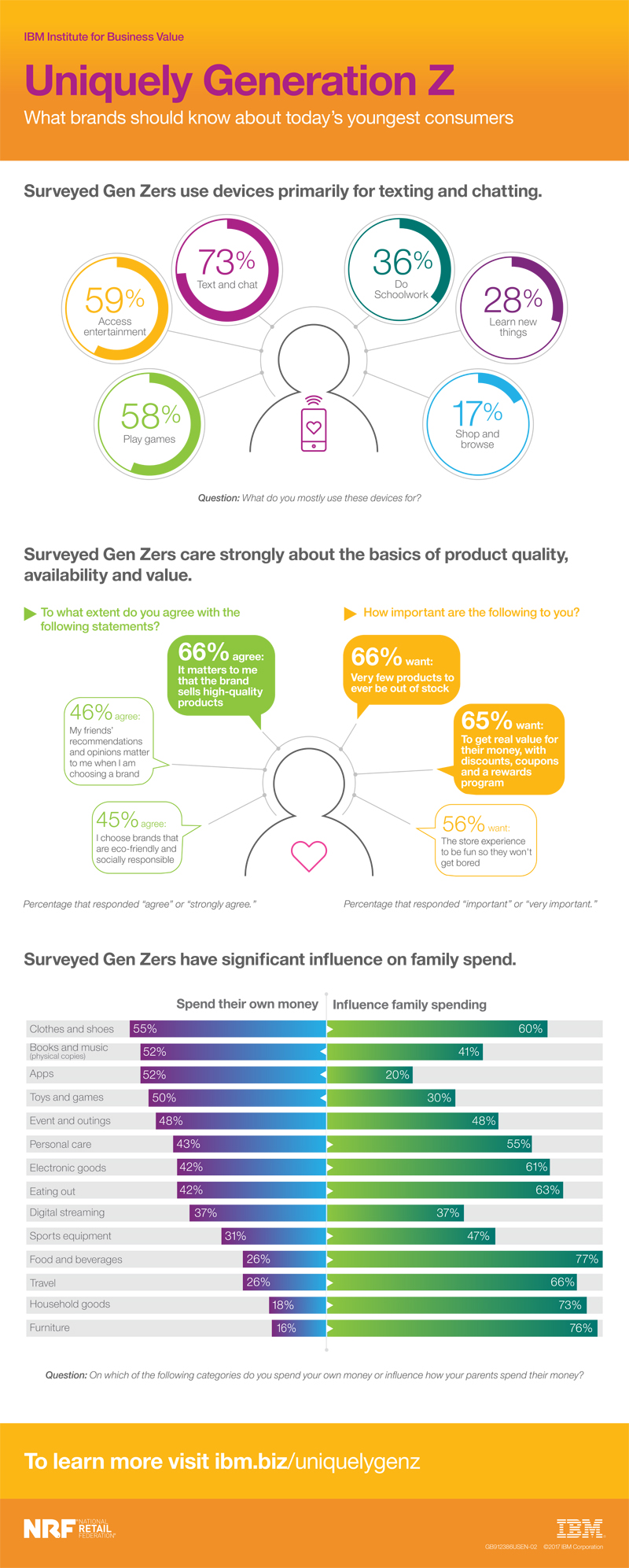Because Generation Z (born between the mid-1990s and early 2000s) is the first “digitally native” generation, one might expect that their shopping habits would skew toward online platforms. However, according to a new study released by IBM, in collaboration with the National Retail Federation, the exact opposite is true ― they prefer to shop in-store ― and two FIT Fashion Business Management (FBM) seniors took part in a live-streamed panel discussion to talk about why.
“I prefer to shop in-store because I like to touch, feel, and try on the product before making any type of purchasing decision,” said FBM student Rachel Dean, adding that shopping in-store saves time. “If you order something online and it doesn’t fit or you don’t like it, returning it is a huge hassle,” she noted, “and oftentimes costly.”
Amy Condie agreed, adding the caveat that she will always shop for apparel in-store, but that she likes to shop for small gift items and books online. “With so many stores integrating technology, it’s helping to cater to customers,” she said.
With the global Gen Z population set to reach 2.6 billion by 2020, with $44 billion in buying power, retailers should be mindful of this group’s shopping habits and preferences. The “Uniquely Gen Z” study, conducted by the IBM Institute for Business Value, is based on findings from more than 15,000 consumers aged 13-21 from 16 countries.
Asked what kind of feedback they would give if they were speaking to a brand executive, the FIT students agreed that retailers should integrate technology seamlessly for their customers’ convenience, and that quality is more important than price.
“We want the look but not necessarily the label,” Dean said, citing Zara as an example of a brand that gets it right. “Furthermore, we want variety and surprise. The brand has to be fresh and continually striving to get consumers’ discretionary dollars.”
“As popular as fast fashion is, quality is very important,” Condie added. “Our generation is burdened by student loans, and we just don’t have the money to spend frivolously. I would be willing to spend more on a product I would get much more wear out of.”
While both students agreed that they prefer to purchase products in person, the process that influences their decisions about what to buy comes from social networking and word of mouth.
“Brands need to get in touch with bloggers and trendsetters because they can help market their merchandise and products,” said Dean.

